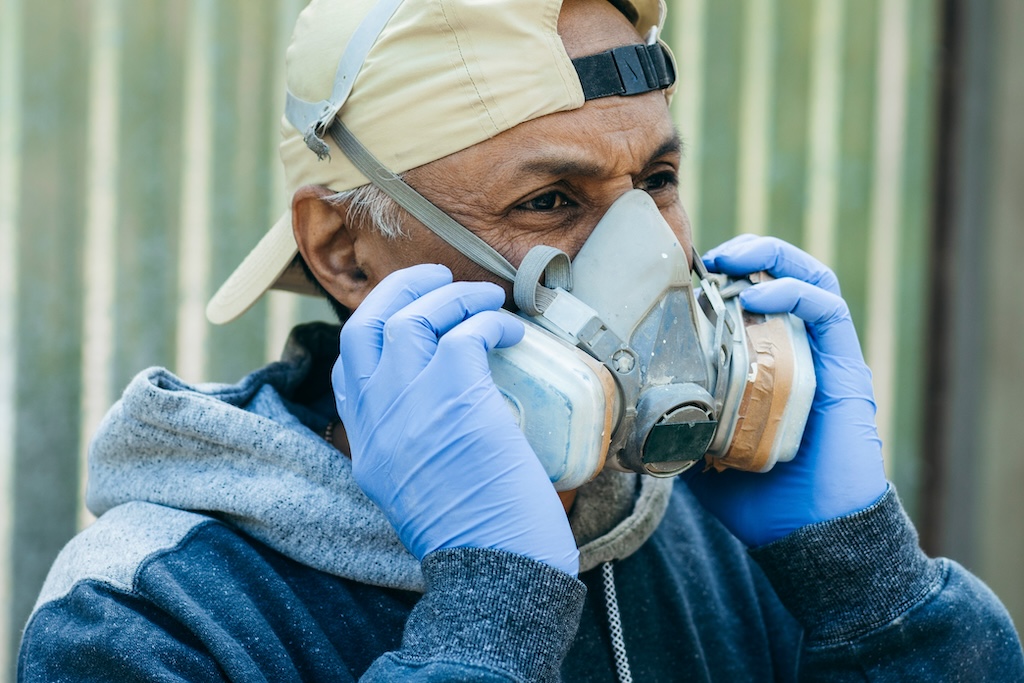Painting can indeed rejuvenate a space, but it’s crucial to consider the potential health implications of paint fumes on indoor air quality. These fumes, predominantly composed of volatile organic compounds (VOCs), can pose various health risks, ranging from short-term discomforts like headaches and dizziness to more serious long-term health issues such as respiratory problems and organ damage. Understanding the composition of paint fumes and their potential impacts underscores the importance of taking proactive measures to minimize exposure during painting projects. Additionally, it’s essential to recognize that certain individuals, such as those with respiratory conditions or chemical sensitivities, may be more vulnerable to the effects of paint fumes, making precautionary measures even more critical.
Understanding the Risks of Paint Fumes
Selecting the appropriate type of paint can significantly mitigate the risks associated with paint fumes. Opting for low-VOC or no-VOC paints is a prudent choice as these formulations emit fewer harmful emissions, making them safer for use in indoor environments, particularly enclosed spaces like homes. By choosing paints with lower VOC levels, not only can indoor air quality be improved, but potential health risks associated with exposure to VOCs can also be reduced, creating a healthier living environment for occupants. Moreover, it’s worth noting that advancements in paint technology have led to the development of eco-friendly options that offer both high performance and low environmental impact, providing even more choices for conscientious consumers.
Choosing the Right Paint
One of the most effective ways to minimize exposure to harmful fumes is by choosing the right type of paint. Low-VOC or no-VOC paints are widely available and significantly reduce the amount of harmful emissions. These paints are particularly beneficial in enclosed spaces and for individuals with allergies, asthma, or chemical sensitivities. They also contribute to better overall indoor air quality. Additionally, some paints are labeled as “odorless” or “low-odor,” which can further enhance the painting experience by reducing the intensity of paint odors during and after application. However, it’s essential to follow manufacturer guidelines regarding ventilation and application procedures to maximize the benefits of these products.
Ensuring Proper Ventilation
Adequate ventilation is essential when painting, as it helps to disperse the fumes and reduce their concentration in the air. Open windows and doors to allow for cross-ventilation. Use fans to circulate the air and direct fumes outside. Additionally, consider using exhaust fans in confined or poorly ventilated areas to help remove paint fumes more effectively. It’s also important to note that proper ventilation not only helps protect indoor air quality but also contributes to the overall comfort of individuals working or residing in the space. Moreover, improving ventilation can help accelerate the drying process of paint, allowing for quicker re-entry into freshly painted areas.
Using Protective Equipment
When working in areas with limited ventilation or when using paints with higher VOC levels, wearing protective equipment is advisable. A mask or respirator can help filter out harmful particles and gases. Additionally, wearing gloves and protective eyewear can prevent skin and eye irritation. It’s essential to choose respirators specifically designed for paint fume protection and ensure proper fit and seal to maximize effectiveness. Moreover, disposable coveralls can be worn to prevent paint splatters on clothing and skin contact with potentially hazardous substances. By incorporating personal protective equipment into your painting routine, you can further reduce the risk of adverse health effects associated with paint fumes.
Timing Your Project Wisely
Plan your painting projects during warmer months when it’s easier to ventilate by opening windows and doors. It’s also beneficial to paint in stages, allowing each area to air out before moving on to the next, which can reduce the overall concentration of fumes in your working environment. Additionally, consider scheduling painting projects during times when occupancy levels are low to minimize exposure to paint fumes for occupants. Avoid painting during periods of high humidity or precipitation, as these conditions can prolong drying times and increase the likelihood of indoor air quality issues. By carefully timing your painting projects, you can optimize ventilation opportunities and minimize disruption to occupants while achieving satisfactory results.
Taking Frequent Breaks
During long painting sessions, take frequent breaks to step outside and breathe fresh air. This can help alleviate the effects of prolonged exposure to paint fumes and reduce the likelihood of experiencing symptoms like headaches or dizziness. Additionally, staying hydrated and maintaining proper nutrition can support your body’s ability to cope with exposure to paint fumes and other environmental stressors. Incorporating regular breaks into your painting routine not only promotes physical well-being but also enhances productivity and overall satisfaction with the painting process. Moreover, taking breaks allows you to assess progress, make any necessary adjustments, and ensure that safety measures are being properly implemented.
Safe Storage and Disposal
Store paint cans properly by sealing them tightly and keeping them in a cool, dry place, away from living spaces. Dispose of old or unused paint responsibly to avoid unnecessary exposure to fumes. Check with local waste management services for guidelines on disposing of paint products. Additionally, consider donating unused paint to community organizations or recycling programs to minimize waste and environmental impact. Proper storage and disposal practices not only reduce the risk of accidental spills or leaks but also contribute to a safer and cleaner living environment. By adopting responsible habits regarding paint storage and disposal, you can play a role in protecting both human health and the environment.
Final Thoughts
While painting can indeed transform a space visually, it’s crucial to acknowledge the potential health risks associated with paint fumes. Opting for low-VOC paints is a proactive step toward reducing harmful emissions. Proper ventilation plays a key role in dispersing fumes and maintaining indoor air quality. Using protective gear like masks and gloves adds an extra layer of defense. Timing your project strategically, taking breaks, and handling paint storage and disposal responsibly further contribute to a safer painting environment. By implementing these precautions, you can enjoy the aesthetic benefits of painting while safeguarding your health. For more information on safe painting practices, visit our website at sisupainting.com and check out our blog at sisupainting.com/blog.





No comment